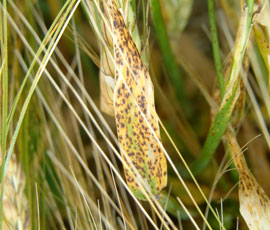Ramularia resistance on the horizon

Researchers are looking for varietal resistance in existing cultivars to produce ramularia resistant barley varieties and reduce the reliance on fungicides.
CORACLE, a multi-faceted LINK project, run by the John Innes Centre in conjunction with the SAC and The James Hutton Institute, and is aiming to produce varieties that will achieve a resistance score of at least seven.
“Over the last 10 years it has become an increasing problem, particularly in the North where we have a late season and longer periods of leaf wetness which in conducive to the spread of the disease,” said Neil Havis, plant pathology researcher at the SAC.
“With the wet season we are having there has been significant infection right across the UK, in untreated trials and also commercially where growers struggled with fungicide timings,” he added.
Currently, little is known on resistance to the disease. However, genetic lines have been identified, from which crosses have been made. “These crosses will now be tested both in the glasshouse and more extensive field trials,” said Mark Looseley of the James Hutton Institute.
“It’s hard to say how long it will take, but if the crosses are successful the time taken to get a commercial variety may be reasonably quick,” explained Mr Looseley.
Fungicides, however, have remained fairly robust against the disease this year when applied at the correct stage, said Dr Havis. “The SDHI’s have been the most effective, but prothioconazole and chlorothalonil have also stood up fairly well too,” he said.
“The strobulurins have become ineffective, and legislation may take chlorothalonil away from us, so that highlights the importance of bringing in this varietal resistance to the pathogen,” explained Dr Havis.

